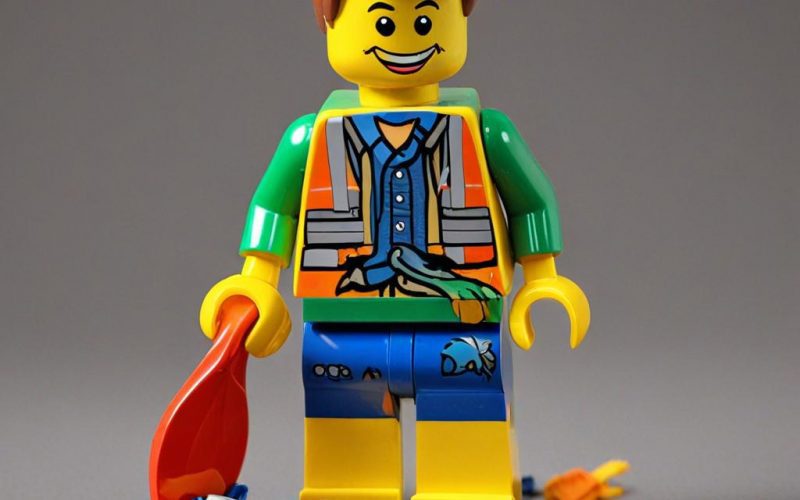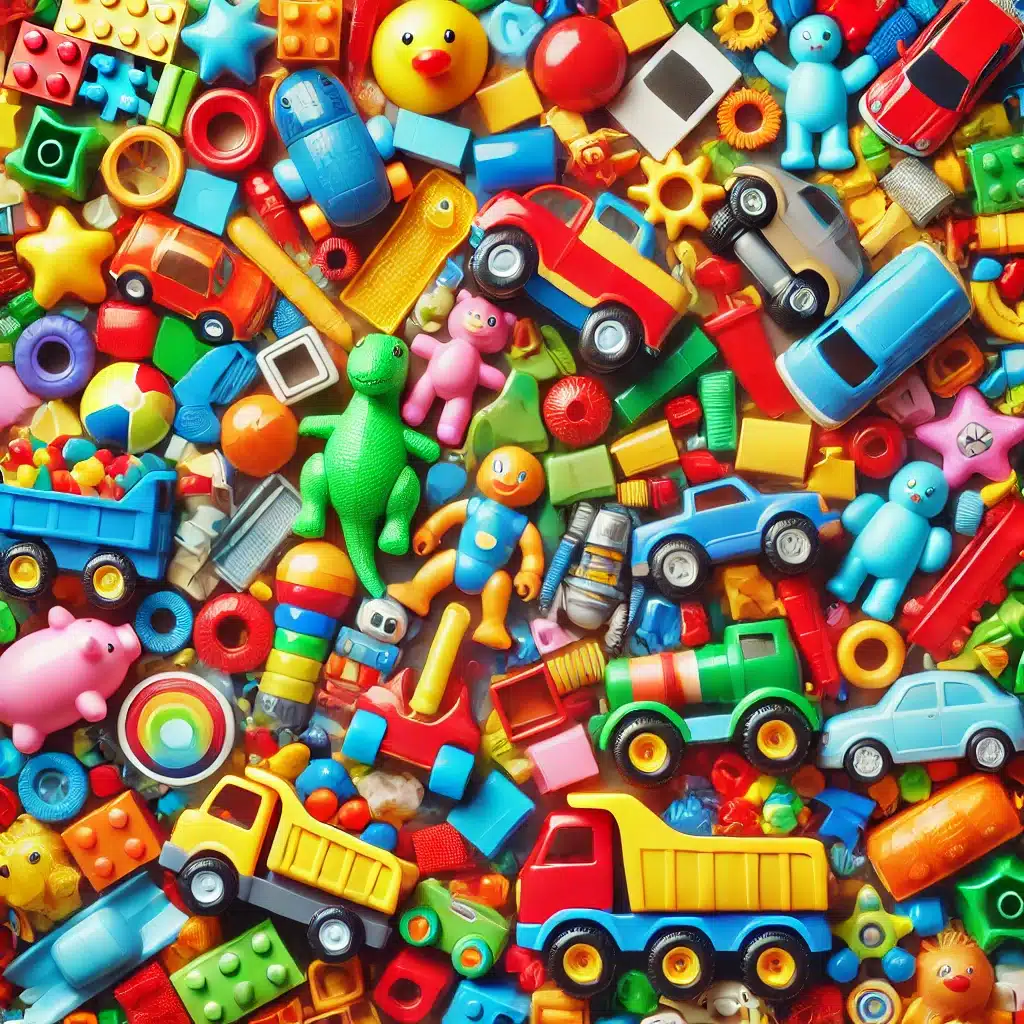
The plastic toy industry, historically reliant on plastics for manufacturing, is undergoing a sustainable oriented transformation. With increasing awareness of environmental issues and a growing demand from consumers for sustainable products, toy manufacturers are gradually adopting eco-friendly practices. This shift is evident across the industry, from major players like LEGO and Mattel to smaller, niche companies dedicated to green manufacturing.
🧵Want to understand why weaning ourselves off fossil fuels like oil is such a tricky challenge?
— Ed Conway (@EdConwaySky) August 9, 2024
Best place to start is with this ubiquitous toy👇
This is a thread about what I call the LEGO conundrum.
It begins when you ponder what a LEGO brick is actually made of… pic.twitter.com/6yD0Xe6vMJ
In this article we explore the steps the toy industry is taking to reduce its environmental footprint and the challenges that remain.
The Environmental Challenge of Plastic Toys
Plastic toys dominate the market, accounting for approximately 90% of all toys sold globally. These toys, made from non-biodegradable materials, contribute significantly to the world’s plastic waste problem. It’s estimated that for every $1 million in revenue, the toy industry uses around 40 tons of plastic. Many of these toys end up in landfills, with about 80% of them being discarded after a short lifespan. This poses a severe environmental challenge, as most plastic toys do not biodegrade and can persist in the environment for hundreds of years.
Plastics in toys also pose potential health risks. Some plastics contain harmful chemicals like phthalates and bisphenol A (BPA), which can leach out over time. These substances have been linked to various health issues, prompting some manufacturers to develop toys using safer, plant-based, or recycled materials.
Plastic toys that most frequently end up being thrown away include:
1. Single-Use and Small Toys
- Party Favors and Happy Meal Toys: These small, often low-quality toys are designed for single or short-term use. They are typically discarded quickly because they either break easily or lose their appeal after a short time.
- Cheap Figurines and Miniatures: Small plastic figurines and miniatures, often found in bulk packs or as part of board games, are frequently discarded when children lose interest or parts go missing.
2. Seasonal and Themed Toys
- Holiday-Themed Toys: Toys designed for specific holidays (like Halloween or Christmas) often have a very short lifespan and are thrown away once the season passes. These are rarely kept for long-term use.
- Movie and TV Show Tie-Ins: Toys linked to specific movies or TV shows, especially those tied to short-lived franchises, tend to be discarded once the media loses popularity. Children often outgrow or lose interest in these toys quickly.
3. Plastic Dolls and Action Figures
- Barbie Dolls and Action Figures: While some of these toys are collected, many are mass-produced and end up in landfills when they are no longer wanted. Broken or outdated models, particularly those that are not collectible, are frequently discarded.
4. Plastic Toy Sets and Accessories
- Building Sets: Incomplete or broken pieces from building sets like LEGOs or Playmobil often get thrown away, especially when key components are missing, reducing the set’s playability.
- Plastic Accessories: Items like dollhouse furniture, toy vehicles, or play kitchen items often get discarded when they break or when children outgrow the main toys they accompany.
5. Electronic Plastic Toys
- Battery-Operated Toys: These toys often have a short lifespan due to battery or mechanical failure. Once they stop working, they are typically thrown away, contributing to plastic and electronic waste.
Steps Towards Sustainability
In response to these environmental concerns, toy manufacturers are increasingly adopting sustainable practices. Here’s how some companies are leading the way:
1. LEGO’s Commitment to Sustainable Materials
LEGO, one of the world’s most iconic toy manufacturers, has committed to phasing out oil-based plastics from its products by 2030. The company has already started using bio-polyethylene, a plant-based plastic derived from sugarcane, for its softer elements like trees and bushes.
LEGO is also heavily investing in research to develop a sustainable alternative for its durable Acrylonitrile Butadiene Styrene (ABS) bricks, which are currently made from petroleum-based materials.
2. Mattel’s Recycled Plastic Initiatives
Mattel has also made significant strides in sustainability. In 2021, the company launched the “Barbie Loves the Ocean” line, the first fashion doll line made from recycled ocean-bound plastic. This initiative is part of Mattel’s broader goal to use 100% recycled, recyclable, or bio-based plastic materials in all its products and packaging by 2030.
Additionally, Mattel’s Mega Bloks toy line now includes sets made from bio-based plastics, emphasizing both environmental responsibility and educational value.
3. Green Toys: Pioneering Recycled Plastic
Green Toys, a company that has become synonymous with eco-friendly toys, has been using 100% recycled plastic, primarily from milk jugs, to manufacture its products. This approach not only reduces the environmental impact of plastic waste but also sets a benchmark for sustainability in the industry. The company’s toys are designed to be fully recyclable at the end of their life cycle, minimizing their environmental footprint.
4. Playmobil’s Plant-Based Plastics
Playmobil has transitioned its entire toddler toy portfolio to plant-based materials. The Playmobil Junior range is now made from plastics that are 90% plant-based, marking a significant move towards more sustainable materials in toy production.
5. Hasbro’s Plastic-Free Packaging
Hasbro had set an ambitious goal to eliminate virtually all plastic from new product packaging by the end of 2022. This included phasing out polybags, elastic bands, shrink wrap, window sheets, and blister packs in favor of more sustainable materials. This initiative was part of Hasbro’s broader commitment to improving the environmental impact of its toys.
But by 2023 Hasbro announced that they would be reverting to plastic window-based packaging for some of their products due to customer feedback and backlash. Many collectors and customers expressed concerns about not being able to see the figures inside the packaging. As a result, Hasbro decided to bring back the plastic window packaging later in 2023 and into 2024 for certain products.
Challenges and Future Directions

While these initiatives represent significant progress, the toy industry still faces challenges in fully transitioning to sustainable practices. The primary challenge lies in finding materials that match the durability, safety, and cost-effectiveness of traditional plastics. For example, while LEGO is making progress with bio-based materials, developing a plant-based alternative to its durable ABS bricks remains a complex challenge.
Moreover, the economic implications of switching to sustainable materials are significant. Bio-based and recycled materials often come at a higher cost, which can impact pricing and accessibility. However, with consumer demand for sustainable products on the rise—45% of parents under 40 now consider the environmental impact of toys when making purchases—manufacturers are increasingly incentivized to invest in greener alternatives.
Toy Industry at a Critical Juncture
The toy industry is at a critical juncture. As environmental concerns become increasingly urgent, the push for sustainable practices in toy manufacturing is not just a trend but a necessity. Companies like LEGO, Mattel, and Green Toys are leading the way, demonstrating that it is possible to create beloved toys while also taking responsibility for the planet.
However, the journey towards fully sustainable toy production is ongoing, and it will require continued innovation and commitment from the industry as a whole.
